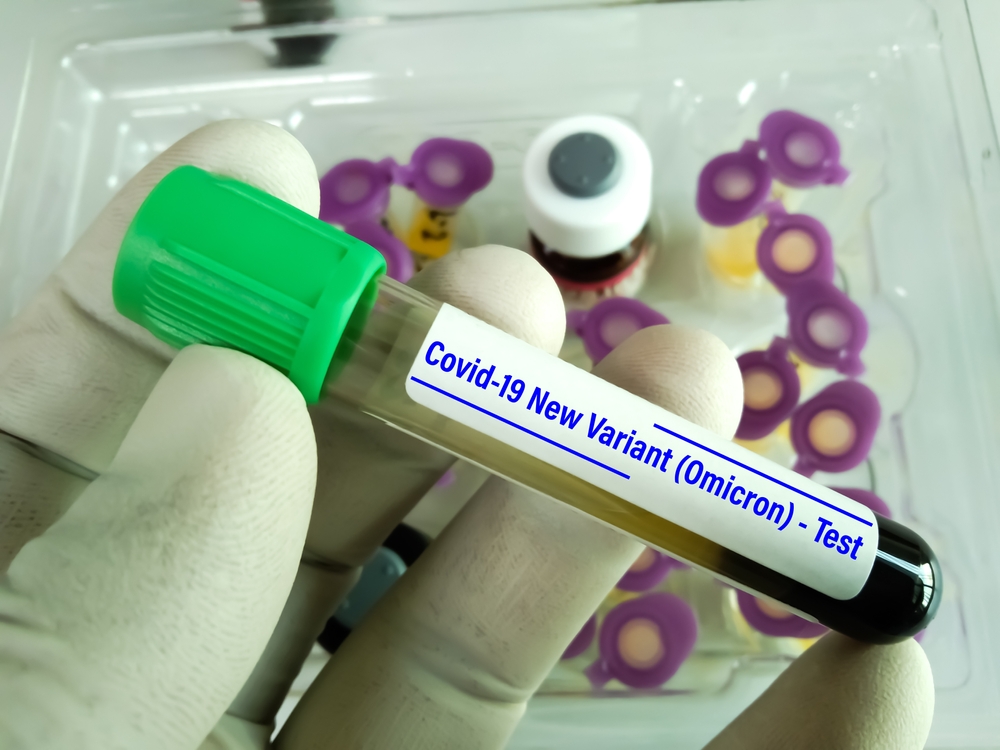A Glimmer Of Hope Cases Of Omicron In South Africa Plummet
Contributors are not employed, compensated or governed by TDM, opinions and statements are from the contributor directly

According to medical specialists, South Africa’s recent reduction in new COVID-19 cases could indicate that the country’s significant omicron-driven increase has peaked. Not only that, but infections appear to have subsided fast following an initial furious increase.
While daily virus case numbers are notoriously unreliable due to uneven testing, reporting delays, and other changes, the dramatic drop in case counts is a tantalising signal – though far from conclusive – as to what may be in store elsewhere, where the omicron wave is still raging.
South Africa has been in the vanguard of the COVID-19 variant, but after reaching a high of about 27,000 new cases nationwide last Thursday, the number decreased to around 15,424 on Tuesday. The decline began early and continued in Gauteng province, South Africa’s most populous with 16 million inhabitants, including the main metropolis, Johannesburg, and Pretoria’s capital.
“The drop in new cases nationally combined with the sustained drop in new cases seen here in Gauteng province, which for weeks has been the centre of this wave, indicates that we are past the peak,” said Marta Nunes, senior researcher at the Vaccines and Infectious Diseases Analytics department of the University of Witwatersrand.
“It was a short wave … and the good news is that it was not very severe in terms of hospitalisations and deaths,” she said. It is “not unexpected in epidemiology that a very steep increase, like what we saw in November, is followed by a steep decrease.”
Gauteng province saw its numbers rise dramatically in mid-November. Scientists performing genetic sequencing immediately detected the new, highly altered omicron variant, which was publicly announced on November 25.
Omicron, far more transmissible, swiftly established dominance in South Africa. According to tests, an estimated 90% of COVID-19 cases in Gauteng province since mid-November have been omicron.
And the rest of the world appears to be catching up, with omicron already displacing the delta variant as the major coronavirus strain in some countries. According to the World Health Organization, the variant has been found in 89 countries worldwide.
Experts in South Africa were concerned that the sheer amount of new infections would overload the country’s hospitals, even though omicron appears to cause milder disease, with fewer hospitalisations, people requiring oxygen, and deaths.
However, cases in Gauteng began to decline. The province’s numbers have progressively declined following a high of 16,000 new infections on December 12, with just over 3,300 cases reported on Tuesday.
“It’s significant. It’s very significant,” Dr Fareed Abdullah said of the decrease. “The rapid rise of new cases has been followed by a rapid fall, and it appears we’re seeing the beginning of the decline of this wave,” said Abdullah, working in the COVID-19 ward at Pretoria’s Steve Biko Academic Hospital.
In another sign that South Africa’s omicron surge may be receding, a study of health care professionals who tested positive for COVID-19 at Chris Hani Baragwanath hospital in Soweto shows a rapid increase and then a quick decline in cases.
“Two weeks ago, we were seeing more than 20 new cases per day, and now it is about five or six cases per day,” Nunes said. But, she said, it is still very early, and several factors must be closely watched.
South Africa’s positivity rate has remained high at 29 per cent, up from barely 2 per cent in early November, indicating that the virus is still circulating at relatively high levels among the population, she said.
Many businesses close for a month during the holiday’s season, and people travel to visit family, frequently in rural places. According to scientists, this could accelerate the spread of omicron throughout South Africa and into neighbouring countries.
“In terms of the massive everyday doubling that we were seeing just over a week ago with huge numbers, that seems to have settled,” said Professor Veronica Uekermann, head of the COVID-19 response team at Steve Biko Academic Hospital.
“But it is way too early to suggest that we have passed the peak. There are too many external factors, including the movement during the holiday season and the general behaviour during this period,” she said, noting that infections spiked last year after the holiday break.
It’s summer in South Africa, and many gatherings take place outside, which may explain the contrast between the omicron-driven wave there and the surges in Europe and North America, where people like to gather indoors.
Another unknown is how omicron has spread among South Africans without producing illness.
Some health experts have stated that because South Africa appears to have undergone a brief, moderate outbreak of omicron, the variant may behave similarly in the United States. Nunes, on the other hand, warns against leaping to conclusions.
“Each setting, each country is different.” The populations are not the same. “The demographics of the population, as well as the immunity, differ between countries,” she explained. With an average age of 27, South Africa’s population is younger than that of many Western countries.
Uekermann underlined that most COVID-19 patients currently being treated in hospitals are unvaccinated. Approximately 40% of adult South Africans have received two doses of the vaccine.
“All of my ICU patients are unvaccinated,” Uekermann explained. “Certainly, our vaccinated patients fared better in this wave.” We have several people who are critically ill with severe COVID and are unvaccinated.”


Comments are closed.